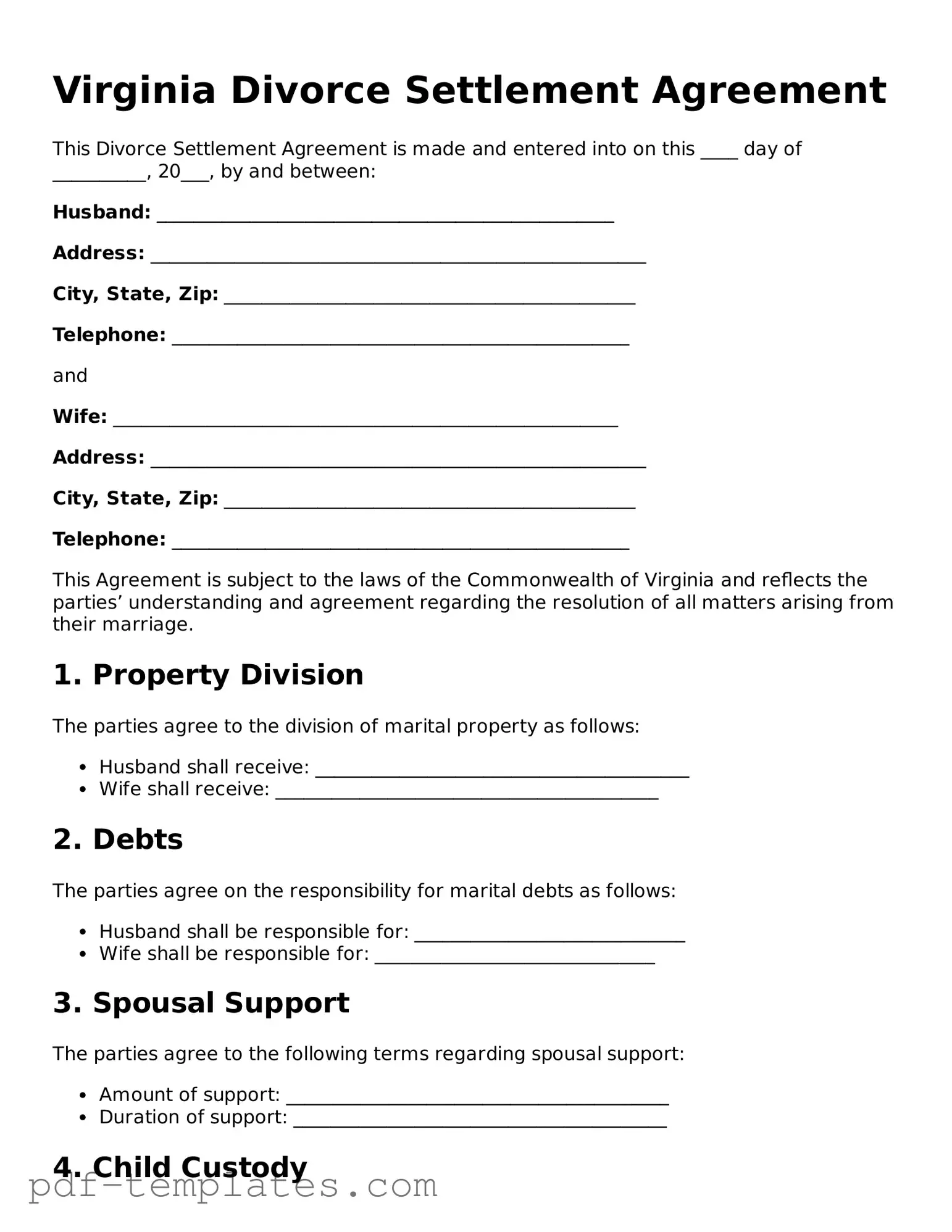The Virginia Separation Agreement is similar to the Divorce Settlement Agreement as both documents outline the terms of a couple's separation. This agreement typically includes provisions related to property division, spousal support, and child custody arrangements. Like the Divorce Settlement Agreement, the Separation Agreement can be used to formalize the terms of a couple's separation before the divorce is finalized. It serves as a binding contract that can help prevent disputes later on, ensuring that both parties have a clear understanding of their rights and responsibilities during the separation period.
The Marital Settlement Agreement is another document closely related to the Divorce Settlement Agreement. This document is often utilized in divorce proceedings to detail how assets and debts will be divided. It encompasses similar elements such as child support, visitation rights, and alimony. The Marital Settlement Agreement is particularly important because it can be presented in court as part of the divorce process, streamlining the legal proceedings and helping to ensure that both parties adhere to the agreed-upon terms.
For those interested in the intricacies of mobile home transactions, understanding the Mobile Home Bill of Sale process is vital. You can review the specifics by accessing a well-structured guide on the essential Mobile Home Bill of Sale document, which outlines important aspects of the transfer of ownership.
A Child Custody Agreement shares similarities with the Divorce Settlement Agreement, especially in cases where children are involved. This document specifically focuses on the arrangements for the care and custody of children post-divorce. It details parenting plans, visitation schedules, and decision-making responsibilities. While the Divorce Settlement Agreement encompasses broader issues, the Child Custody Agreement zeroes in on the best interests of the children, ensuring that their needs are prioritized during and after the divorce process.
The Property Settlement Agreement is another document that aligns closely with the Divorce Settlement Agreement. This agreement specifically addresses how marital property and debts will be divided between the spouses. It outlines the distribution of assets, including real estate, bank accounts, and personal property. By clearly defining the division of property, this agreement helps to prevent future disputes and ensures that both parties understand their financial obligations and entitlements after the divorce is finalized.
Lastly, a Prenuptial Agreement, while typically created before marriage, bears similarities to the Divorce Settlement Agreement in that it establishes the terms for asset division and support in the event of a divorce. This document can include provisions regarding spousal support, property rights, and even child custody arrangements. Though it is executed prior to marriage, its purpose aligns with the Divorce Settlement Agreement, as both aim to clarify financial and personal responsibilities, thereby reducing conflict and uncertainty during a divorce.
